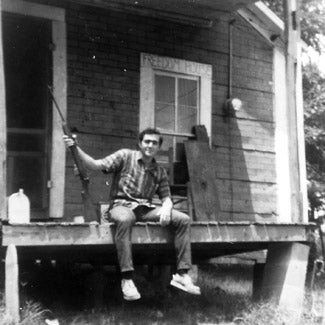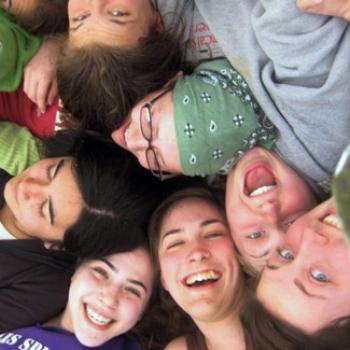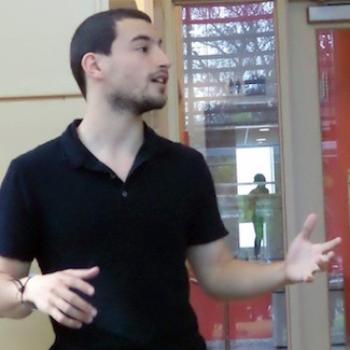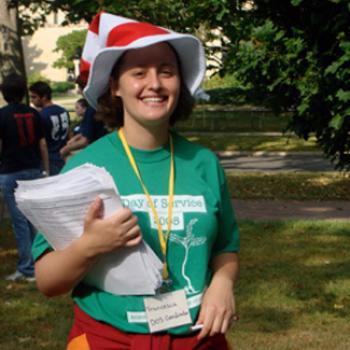On working with the Oberlin Action for Civil Rights
Matthew Rinaldi ’69
“Oberlin played a major role in the student civil rights movement... Not just one person, but many people, linked arm and arm together, ended the reign of white supremacy in the Deep South.”

Born in 1947, I came of age during the civil rights movement. During high school, I attended a National Science Foundation summer camp; my roommate, Kenneth Chestnut, was an African-American student from the Deep South. At the end of the summer, Kenneth desperately insisted that we go see Paul Newman in “Hud.” Why? Because in his hometown, the movie theater was whites only.
Still in high school, I joined Long Island Congress of Racial Equality (CORE). I heard a traveling civil rights worker speak, a young white guy with a SNCC button on his overalls. Afterwards, I knew that I wanted to be a civil rights worker.
During my senior year of high school, I saw Oberlin College on the front page of the New York Times. A group of Oberlin students were heading to Mississippi to rebuild a black community church that had hosted civil rights meetings. The church had been burned to the ground. The students called themselves Carpenters for Christmas. I thought, “Oberlin College must be the place to be!”
I became a freshman in September of 1965.
During my freshman year winter break, the student organization Oberlin Action for Civil Rights (OACR) sent 18 of us to spend a week working with a civil rights project in Kosciusko, Mississippi. Though most lived with the local community, a few of us slept in the Freedom House.
The Freedom House was located in the poorest section of the city, a “blacks only” area with perhaps 2,000 people, no paved roads, only dirt, small houses and some really run down shacks set amidst trees and bushes. There were no fences between the houses, so dirt paths crisscrossed the whole neighborhood. People walked to visit other folks on these dirt paths, not on the roads. We arrived in front of a dilapidated shack with a painted sign that said “Freedom House.” I vividly remember pulling up and being greeted with great excitement. I felt like I was in a foreign land, with the neighborhood kids shouting, “The freedom riders are here, the freedom riders are here!”
What did we do each day? Lots of voter registration work. We planned in the morning and kept track throughout the day. We always worked in groups of at least three. We drove to designated areas and went door to door, which could literally mean from one part of the field to another. We had real conversations, particularly with the younger folks. They were increasingly exposed to the outside world through military service, relatives in the north, and most certainly through television.
With a solid group of high school students, we staged highly confrontational sit-ins at two different “whites only” restaurants: one on the courthouse square, in the very heart of the city, and the other on a major roadway. We sat, black and white, at the tables and at the counter and waited for service. I remember being told something really nasty by the waitress at the counter. There was lots of tension, but fortunately, no showdown. The police arrived, and we negotiated. We were allowed to avoid arrest by leaving, which we did.
This was a “first of its kind” event in Kosciusko. Everyone, black and white, knew about it very quickly.
We did the same routine at the local movie theater, which had a “Black Only” balcony. Our goal was to all sit together downstairs. One night, we bought tickets and all entered the downstairs lobby. We never got to the seats, as they barred the doors immediately and called the police. Same bargaining, same result. We left as a group.
One night we were attacked. This was the new era of self-defense. I was on guard duty paired with an Oberlin student from Wisconsin. Looking out the front window of the house, we saw two cars drive slowly by in front of the Freedom House. We could faintly see the passengers were white men. We did not understand how clearly this was a threat. Everyone else was in the back two rooms, asleep. We did not alert them or wake up anyone. The cars returned.
This time, the car stopped by the front of the Freedom House. Suddenly, all hell broke loose: “Bang, bang, bam, bam, bang!”
The window shattered and we both hit the floor. I crawled under the bed. A kid from a back room, Don Salisbury ’68, who had been walking into the front room was grazed in the chest, the firing continued..."bang, bang, bam, bam, bang, bang"...and bullets and shotgun pellets were flying in through the walls and then in slow motion the other guy got up from the floor and opened the front door and opened fire on the cars with a shotgun and I was caught up in his energy trail and I followed him off the floor and out to the porch.
I got off one shot with a .22 caliber rifle as the cars drove away as fast as they possibly could, the men in the cars still firing at the Freedom House. One bullet grazed the head of Dick Klausner, but the bullet just “creased his hair.” The shot coming through the side of the house as the cars sped away. The white men in the cars kept firing.
I did not aim at the cars. I deliberately shot above them. I wanted them to hear another rifle firing at them...I most certainly did not want them to return... but I didn’t try to hit them. It all happened very quickly, even though portions seemed to happen in slow motion. The kid who was grazed in the chest, Don Salisbury, went to the hospital and was fine. In retrospect, we were extremely lucky.
That was the week in a nutshell. We left on time. No arrests. When we got back to Oberlin two of us were told to meet with the Dean of Students. His bottom line was this... did you bring any guns back to Oberlin? In retrospect that was the totally appropriate question for him to ask, though to us at the time it seemed cold... the guns were lent to the Freedom House by local Black folks and had stayed behind in Mississippi. I guess I thought the Dean of Students might be a little concerned about our well-being.
In the summer of 1966, I returned to Kosciusko and Attala County. Part of the summer I was housed by Elmore and Beatrice Winfrey. At one point, our Freedom House in the small town of McCool was burned down. Under the supervision of my host, Elmore Winfrey, we rebuilt it. This project was documented in the PBS special, “Oprah’s Roots.”
The ethical message of the abolitionist movement in the 1850’s inspired later generations of students. Oberlin played a major role in the student civil rights movement. Over the years, OACR sent hundreds of students to the Deep South, participating in the famous Freedom Summer of 1964. Not just one person, but many people, linked arm and arm together, ended the reign of white supremacy in the Deep South.
---
More of Matthew’s narrative can be found in the personal stories section of the
Civil Rights Movement Veterans Site.
Tags:
You may also like

On her service trip to Open Ground
“Throughout the week, so many tight-knit connections were formed among people from various niches of Oberlin—people who otherwise would have probably never even met each other.”
Hannah Gordon ’11

On embracing public speaking
“My tenure on the Student Union Board helped me to know with certainty that I wanted to enter a world of pivotal dialogue with a firm, clear voice, and gave me confidence that I could.”
Ty Diringer ’14

On her connection to the town of Oberlin
“I will take what I have learned with me: that academics and civic engagement can and should be combined, producing something far more enriching together than either alone.”
Francesca Minonne ’08